Football Jigs
Bass fishermen frequently employ football-shaped jigs, which get their name from the fact that they are made to resemble footballs. The jig can be trailed along the bottom to mimic a crawfish or other bottom-dwelling prey, and they are generally employed to fish in rocky or hard-bottomed locations. When utilizing football jigs, keep the following in mind:
Why employ them: When bass fishing in places with rocky or hard bottoms, football jigs are a wonderful option since they can be trailed down the bottom and bounced over rocks and other structure to induce hits. They can be strung with greater weights to swiftly reach the bottom, making them helpful while fishing in deep water as well.
How to use a football jig: Cast a football jig out to where you want to fish, then wait for it to sink to the bottom. Next, draw it slowly along the bottom, pausing now and again to provide the fish a chance to strike. By elevating your rod tip and letting it fall back to the bottom, you may also hop the jig along the bottom of the water. As you recover the jig, pay attention to how it feels, and set the hook when you sense a bite.
When is best to employ them: All throughout the year, football jigs can be successful, but they are especially successful in the fall when bass are feeding strongly in preparation for the winter. In the spring, when bass are spawning and consuming crawfish and other bottom-dwelling prey, they can also be effective.
Where to fish them: Points, humps, and ledges with rocky or hard bottoms are good places to fish football jigs. Bass are likely to be holding in places with structure and cover, such as rocks, stumps, and brush piles.
- Versatility: Football jigs can be used in a variety of situations, from fishing deep structure to working shallow flats. They are especially effective in rocky areas where other lures might get snagged.
- Mimicry: Football jigs are designed to mimic the movement of a crawfish, which is a favorite food of bass. The skirt on the jig imitates the legs of the crawfish, while the head bounces along the bottom, imitating the movement of a fleeing crawfish.
- Attraction: Football jigs are available in a wide range of colors and sizes, making it easy to match the forage in the area you are fishing. The combination of the skirt and the head movement can be very appealing to bass, making them more likely to strike.
To use a football jig effectively, here are some tips to keep in mind:
- Choose the Right Weight: The weight of the jig you choose should depend on the depth and current of the water you are fishing in. A heavier jig will sink faster and stay in contact with the bottom, while a lighter jig will move more slowly and may be more appealing to bass.
- Use the Right Trailer: Adding a soft plastic trailer to your football jig can make it more appealing to bass. Popular trailer options include crawfish, worms, and creature baits.
- Fish Slowly: Football jigs are designed to be fished slowly and methodically. Bounce the jig along the bottom, letting it pause briefly between bounces. This will make it look like a crawfish or other prey that is trying to escape.
- Pay Attention to Feedback: When fishing with a football jig, pay attention to the feedback you feel through the line. If you feel a subtle bump or weight, set the hook!
Flipping Jigs
Flipping jigs are a particular kind of bass fishing lure that are made to be utilized in dense vegetation or cover. A weighted head, a hook, and a silicone or rubber skirt that mimics the movement of a baitfish or crawfish are the standard components of these lures. Fishing slowly and deliberately with flipping jigs enables the angler to target particular spots where bass may be hiding in cover.
An fisherman will often flip or pitch the lure into dense cover or vegetation to employ a flipping jig, enabling it to sink to the bottom. The fisherman then pulls the jig carefully along the bottom, pausing every now and then to give the fish an opportunity to strike. In order to replicate the movement of a crawfish, which is a preferred prey of many bass species, flipping jigs can also be hopped or bounced around the bottom.
In situations with dense cover or foliage, where other types of lures could become entangled or snagged, flipping jigs are especially successful. They can be used all year round, but they work best in the spring and summer when bass are looking for cover in shallow water.
Overall, flipping jigs are a versatile and effective lure that can help anglers catch more bass in heavy cover and vegetation.
- Choose the Right Weight: Flipping jigs come in a variety of weights, ranging from 1/4 oz to 1 oz or more. The weight you choose should depend on the depth and cover you are fishing in.
- Consider the Skirt: The skirt on a flipping jig is made up of rubber or silicone strands that imitate the movement of a baitfish or crawfish. Choose a skirt color that matches the forage in the area you are fishing.
- Use a Trailer: Adding a soft plastic trailer to your flipping jig can make it more appealing to bass. Popular trailer options include crawfish, worms, and creature baits.
- Fish Slowly: Flipping jigs are designed to be fished slowly and methodically. Flip the jig into heavy cover or vegetation and let it sink to the bottom. Then, slowly drag it along the bottom, pausing occasionally to give the fish a chance to strike.
- Be Patient: When fishing with a flipping jig, it’s important to be patient and persistent. Bass in heavy cover can be tough to catch, so don’t get discouraged if you don’t get a bite right away. Keep flipping and experimenting with different retrieves until you find what works.
Using flipping jigs in bass fishing can be a highly effective technique, particularly when targeting bass in heavy cover or vegetation. Here are some key tips on how to use flipping jigs:
- Choose the right equipment: To fish with flipping jigs, you’ll need a heavy-duty rod and reel with strong line, as you’ll be casting into heavy cover and vegetation. A braided line with a low stretch is ideal, as it allows you to feel bites and set the hook quickly.
- Choose the right jig: Flipping jigs come in a variety of sizes, weights, and colors. Choose a jig that matches the size and color of the prey in the area you are fishing. A heavier jig will sink faster and allow you to penetrate the cover more effectively.
- Make accurate casts: When fishing with flipping jigs, accuracy is key. Try to place the jig as close to the cover as possible, as this is where bass are most likely to be hiding.
- Use a slow, methodical retrieve: Once the jig is in the water, use a slow and steady retrieve, dragging the jig along the bottom. Pause occasionally to give the fish a chance to strike.
- Experiment with different techniques: Flipping jigs can be fished in a variety of ways, including hopping or bouncing along the bottom to imitate a crawfish. Experiment with different techniques to see what works best in the area you are fishing.
- Be patient: Flipping jigs can be a slow and methodical technique, so be patient and persistent. Keep trying different areas and techniques until you find what works.
Overall, using flipping jigs in bass fishing can be a highly effective way to target bass in heavy cover or vegetation. By choosing the right equipment, making accurate casts, and using a slow, methodical retrieve, you can increase your chances of hooking a big bass.
Swim Jigs
A well-liked and adaptable lure used for bass fishing is the swim jig. They are an efficient lure for catching both largemouth and smallmouth bass because they are made to resemble the motion of a swimming baitfish. Swim jigs are made out of a silicone skirt, a soft plastic trailer that looks like a baitfish tail, and a lead head with a weed guard. The weed guard prevents the jig from getting tangled up in grass as it moves through it.
The fact that swim jigs can be fished in a variety of ways is one of its advantages. You have two options for retrieving them: either cast them out and retrieve them steadily, or stop and go. Until you discover what the bass are biting on, you can also change the speed and depth of your retrieve. Swim jigs can also be productively used to fish in and around weed beds, boulders, and downed trees. Before beginning the retrieval, the jigs can be cast in and around these regions and allowed to sink to the bottom.
It’s crucial to match the swim jig’s size and color to the local baitfish when making your selection. Natural hues like green pumpkin or shad are effective in clear water. Brighter hues like chartreuse or white may be more effective in muddy water. The jig can be made to appear more like a baitfish by adding a soft plastic trailer, which will also boost its effectiveness.
When bass are actively feeding in the spring and fall, swim jigs are frequently used. They are a versatile bait because they may be used in both shallow and deep water. It’s critical to observe the movement of the lure while using swim jigs and modify your retrieve as necessary. Swim jigs may be a highly productive tool for catching bass in a variety of situations with a little technique.
Bass fishing lures that can be utilized in a variety of fishing conditions include swim jigs. They are a fantastic choice if you want to target bass that are active and feeding while swiftly covering a large area of water. The following advice will help you use swim jigs to catch more bass:
- Choose the right size and color: Swim jigs come in a variety of sizes and colors, so it’s important to choose one that matches the size and color of the baitfish in the area you are fishing. Generally, a 1/4 to 1/2 ounce swim jig is a good all-around size, while green pumpkin, shad, and bluegill are popular color choices.
- Use the right gear: You’ll want to use a medium-heavy rod and reel with a fast retrieve ratio (6.4:1 or higher) to effectively fish a swim jig. A braided line with a fluorocarbon leader is a good choice for its sensitivity, strength, and low visibility.
- Retrieve the jig properly: The key to using a swim jig is to retrieve it at a steady pace just above the bottom. The jig should swim through the water in a natural way, mimicking the movement of a baitfish. Experiment with different speeds and pauses until you find what works best for the conditions you’re fishing in.
- Target the right areas: Swim jigs are ideal for fishing around cover such as weed edges, rock piles, and submerged logs. Look for areas where bass are likely to be feeding and use the swim jig to cover a lot of water quickly until you find them.
- Use trailers to enhance the jig: Adding a trailer to your swim jig can help to make it more effective. Soft plastic trailers such as paddle tails or crawfish imitations can mimic the look and movement of a baitfish or crawfish and entice more strikes.
Overall, swim jigs are a great lure to have in your bass fishing arsenal. They are versatile, effective, and can help you catch more bass in a variety of fishing situations. By following these tips, you’ll be well on your way to success with swim jigs.
Finesse Jigs
When pursuing picky or stressed fish, finesse jigs are a common type of jig used in bass fishing. These jigs, which are available in a range of designs, sizes, and hues, are intended to resemble little baitfish or crawfish. They can be caught in a variety of ways and are particularly successful when the fish are not actively feeding or when the water is clear.
Dragging finesse jigs along the bottom and slowly hopping them over rocks, logs, and other structure is one of the most popular techniques for doing so. When fishing in deeper water, this method, sometimes called as dragging or hopping, is especially efficient. Cast out your jig and allow it to sink to the bottom to do this. again, slowly run the jig along the bottom with your rod, pausing now and again to let it sink back down.
By swimming them through the water column, finesse jigs are frequently fished in addition to other methods. When fishing in shallow water or near cover, this method—also referred to as swimming or reeling—is especially effective. Cast your jig out to the desired depth to do this. After that, swim the jig back towards you slowly and steadily while maintaining it just above the water’s surface.
When fishing near docks or other vertical structures, finesse jigs can also be trolled vertically. Use a slow, subtle jigging motion to entice the fish by dropping your jig straight down underneath the boat. When the fish are tightly grasping the structure or suspended in the water column, this method is especially effective.
Use light line and a sensitive rod to detect even the tiniest bites when fishing finesse jigs. For finesse jig fishing, many fishermen like braided line with a fluorocarbon leader because it offers both sensitivity and covertness.
Finesse jigs are an all-around useful and productive tool for bass fishing, especially when pursuing fussy or stressed fish. You may boost your chances of success and catch more fish on the finesse jig by employing the proper methods and equipment.
When bass fishing, finesse jigs are an excellent tool, especially when the fish are picky or not aggressively feeding. Here are some pointers for efficiently employing finesse jigs when bass fishing:
- Choose the right jig: Finesse jigs come in a variety of sizes, shapes, and colors. Choose a jig that matches the size and color of the baitfish or crawfish in the area you are fishing. It’s also important to choose a jig that matches the weight of your line and rod.
- Fish slowly: Finesse jigs are meant to be fished slowly, so take your time. Cast your jig out and let it sink to the bottom. Then, use a slow, subtle retrieve to move the jig along the bottom. This technique is known as dragging or hopping.
- Pay attention to the bottom: As you drag or hop your jig along the bottom, pay attention to any changes in the bottom structure. Bumps, logs, and rocks can all be good places for bass to hide, so slow down and focus on those areas.
- Try different techniques: In addition to dragging or hopping your jig, try swimming it through the water column or jigging it vertically. Experiment with different techniques until you find what works best for the conditions you are fishing in.
- Be patient: Finesse jig fishing requires patience and persistence. Keep trying different techniques and areas until you start getting bites. Once you do, keep working that area until the bite slows down.
- Use light line and a sensitive rod: Finesse jig fishing requires light line and a sensitive rod to detect even the slightest bites. Use braided line with a fluorocarbon leader for the best results.
By following these tips, you can effectively use finesse jigs to catch more bass during your next fishing trip.
Skipping Jigs
In some circumstances, the bass fishing strategy of skipping jigs can be quite successful. When skipping a jig, you cast it close to the water and flick your rod to cause it to skitter across the water’s surface like a stone. When fishing in places with overhanging trees, docks, or other structures where a standard cast can become tangled, this technique can be extremely helpful.
You need the proper tools in order to skip a jig successfully. The best rod is one that is shorter and has a quick action since it will give you greater control over the jig and enable you to make quick, precise throws. In order to get the required range and precision, you’ll also need a high-quality braided line that is both strong and thin.
It’s critical to be aware of your surroundings and search for potential bass hiding spots when using a skipping jig. This can include the vicinity of docks, downed trees, or other buildings where bass may be hiding out. To get your jig as close to the structure as possible, you should throw it as close as you can, ideally skipping it across the water’s surface.
Once your jig is in the water, you should slowly retrieve it while simulating a baitfish’s movement with a series of brief hops. You may also experiment with altering your retrieve pace and pausing sometimes to let the jig sink before picking up the retrieve again. This may encourage any bass in the area to strike.
All things considered, utilizing skipping jigs while bass fishing can be a terrific approach to target fish in locations where conventional casting techniques might not be successful. You may successfully skip your jig across the water’s surface and encourage bass to strike with the appropriate tools and technique, making for a productive day on the water.
- Choose the right equipment: A shorter rod with a fast action and high-quality braided line will help you achieve the necessary distance and accuracy.
- Look for areas with structure: Bass often hide around docks, fallen trees, or other structures where they can seek shelter.
- Cast as close to the structure as possible: Skipping your jig across the surface of the water will help you get as close to the structure as possible.
- Retrieve your jig slowly: Use a series of short hops to mimic the movement of a baitfish, and vary your retrieve speed to entice any nearby bass to strike.
- Pause occasionally: Allowing the jig to sink and then resuming your retrieve can be an effective way to entice bass to strike.
- Pay attention to your surroundings: Be aware of your surroundings and look for signs of bass activity, such as jumping baitfish or ripples on the water.
- Practice your technique: Skipping a jig takes practice, so don’t get discouraged if you don’t catch fish right away. Keep at it, and you’ll soon master the technique and start reeling in more fish.
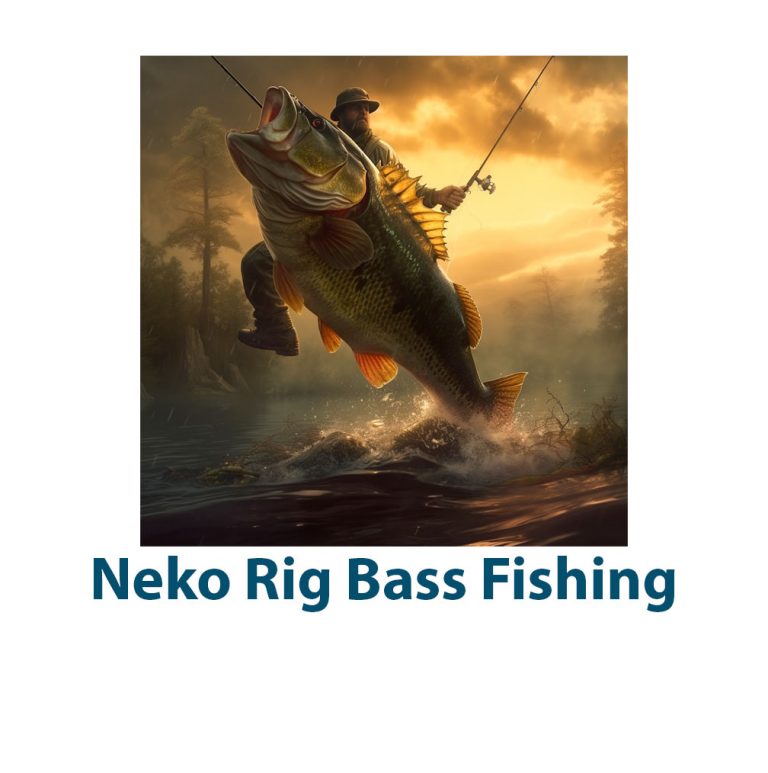
Neko Rig Fishing For Bass
Introduction Hello there, fellow fishermen! Neko rig fishing is a method of fishing that is becoming more and more well-liked among bass fishermen today. The neko rig is a very successful fishing method that has allowed me to catch a lot of bass in a variety of fishing situations. This article will discuss the Neko […]
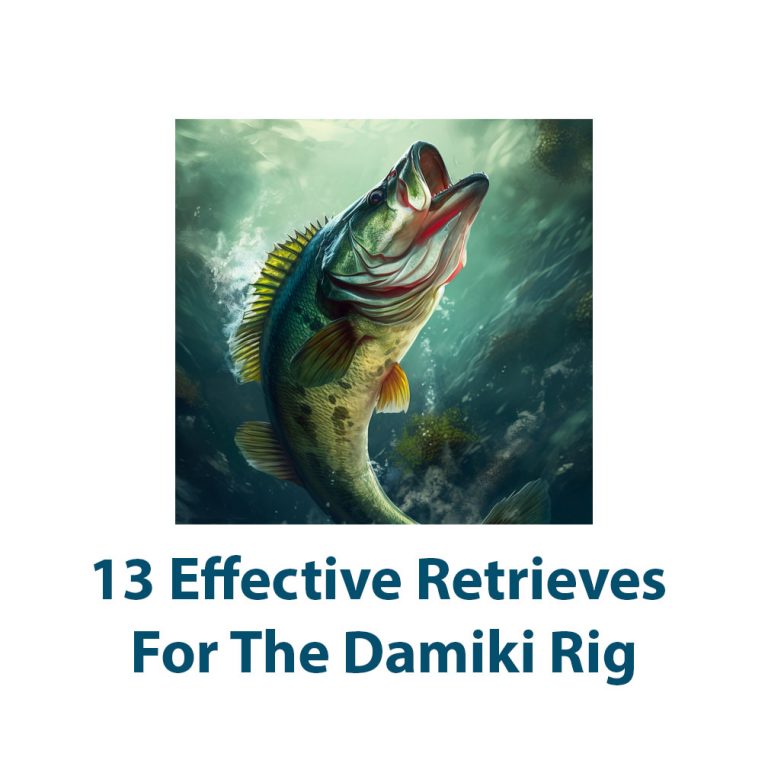
Guide For 13 Effective Retrieves For The Damiki Rig
As a fishing enthusiast, I have always been amazed at how the right retrieve can make all the difference in the world when it comes to catching fish. Recently, I have been experimenting with the Damiki rig and have been blown away by its effectiveness. However, with so many different retrieves to choose from, it […]
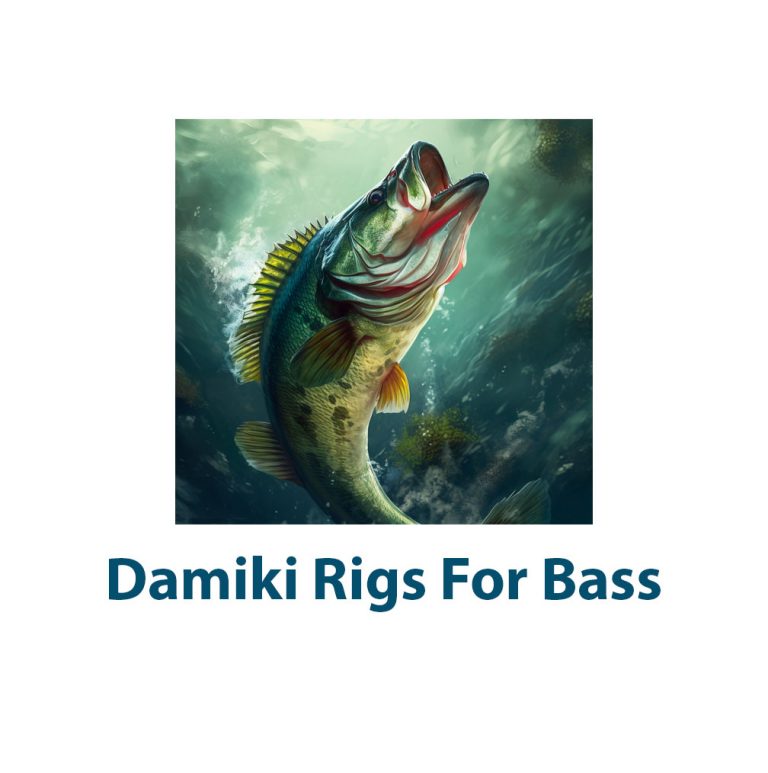
Damiki Rig Guide For Bass
As an avid fisherman, I’m always looking for new techniques and rigs to try out. One of the rigs that had been popping up on my radar lately is the Damiki Rig for bass fishing. To be honest, I was a bit perplexed by it at first – what was this rig and how was […]
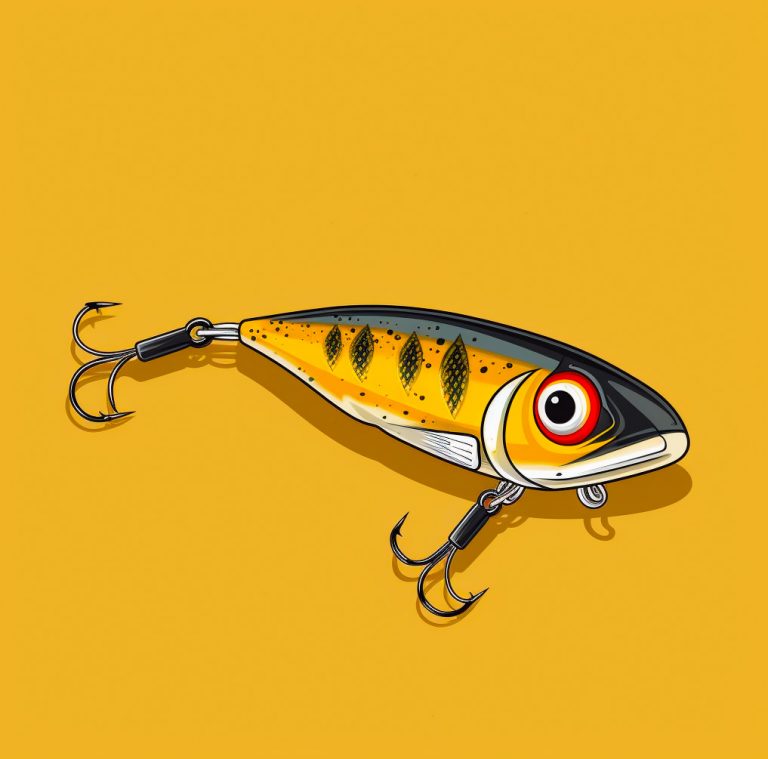
Jerkbaits in Every Season For Bass
Hey there, my fellow fishing enthusiasts! Are you tired of using the same old baits all year round? Well, today we’re going to talk about something that will spice up your fishing game – jerkbaits! And not just any jerkbaits, but jerkbaits that you can use in every season for bass fishing. I know, I […]
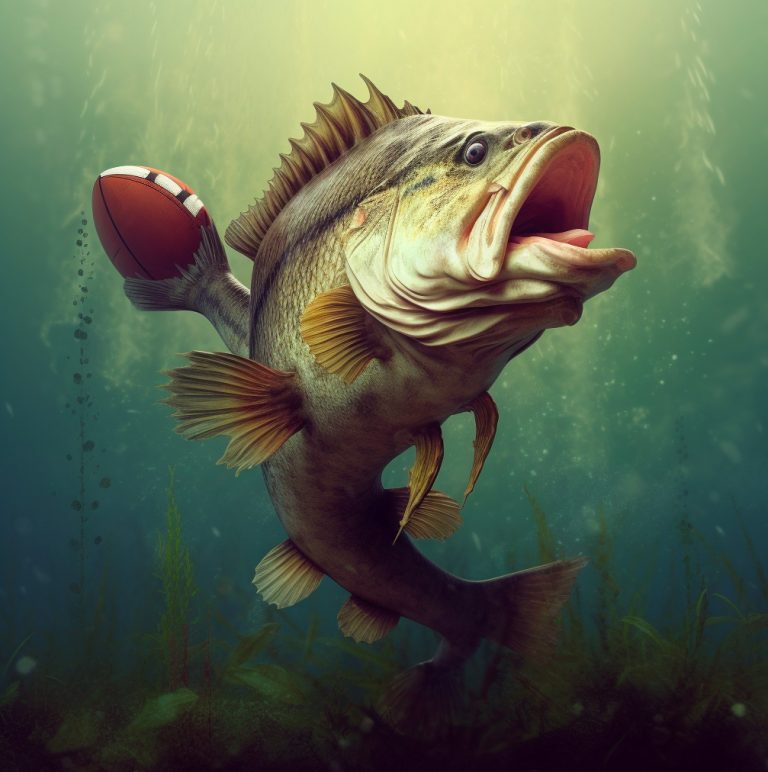
A Guide To Football Jigs For Bass
Introduction As a lifelong angler, I’ve tried my hand at countless types of fishing for different species. But when it comes to fishing for bass, there’s one technique that has stood out above the rest: using football jigs. At first, I was skeptical. The jigs didn’t look like they had much action in the water […]

Jerkbaits For Largemouth, Smallmouth and Spotted Bass
Have you ever heard of a jerkbait? If you’re an avid bass fisherman, chances are you have. But if you’re not quite sure what a jerkbait is or how to use it, don’t worry. I was in the same boat (or should I say, fishing boat) as you not too long ago. However, I have […]
